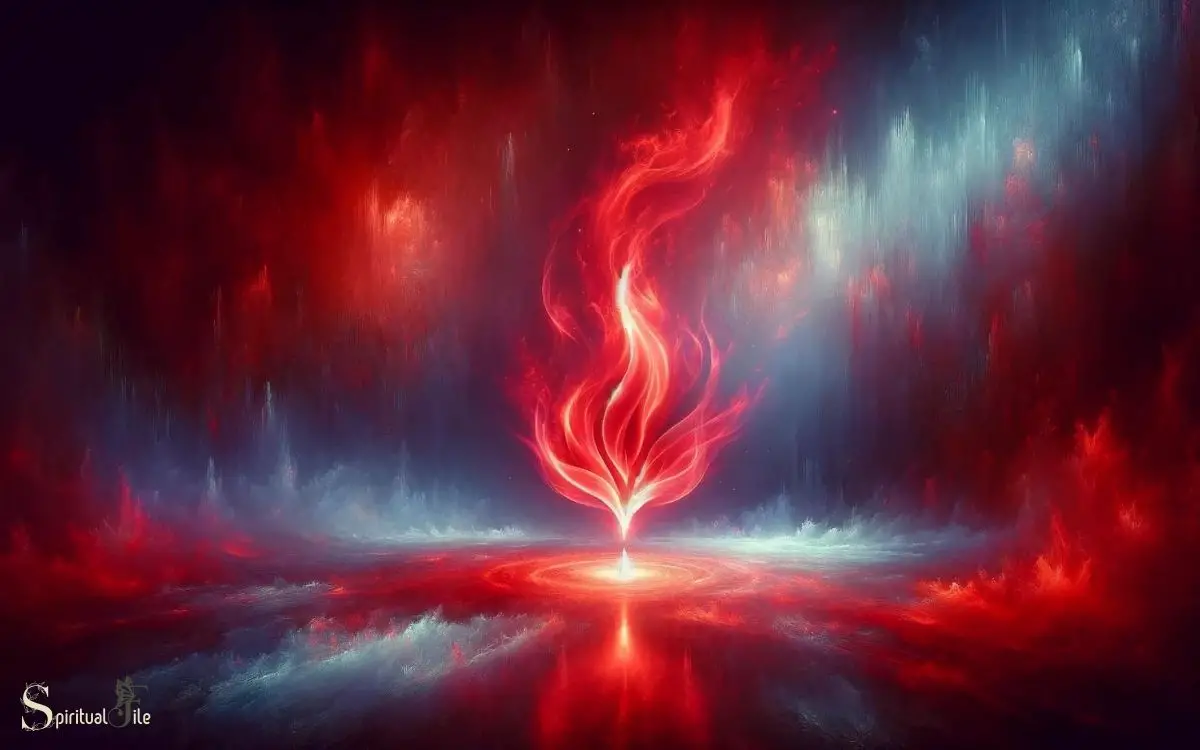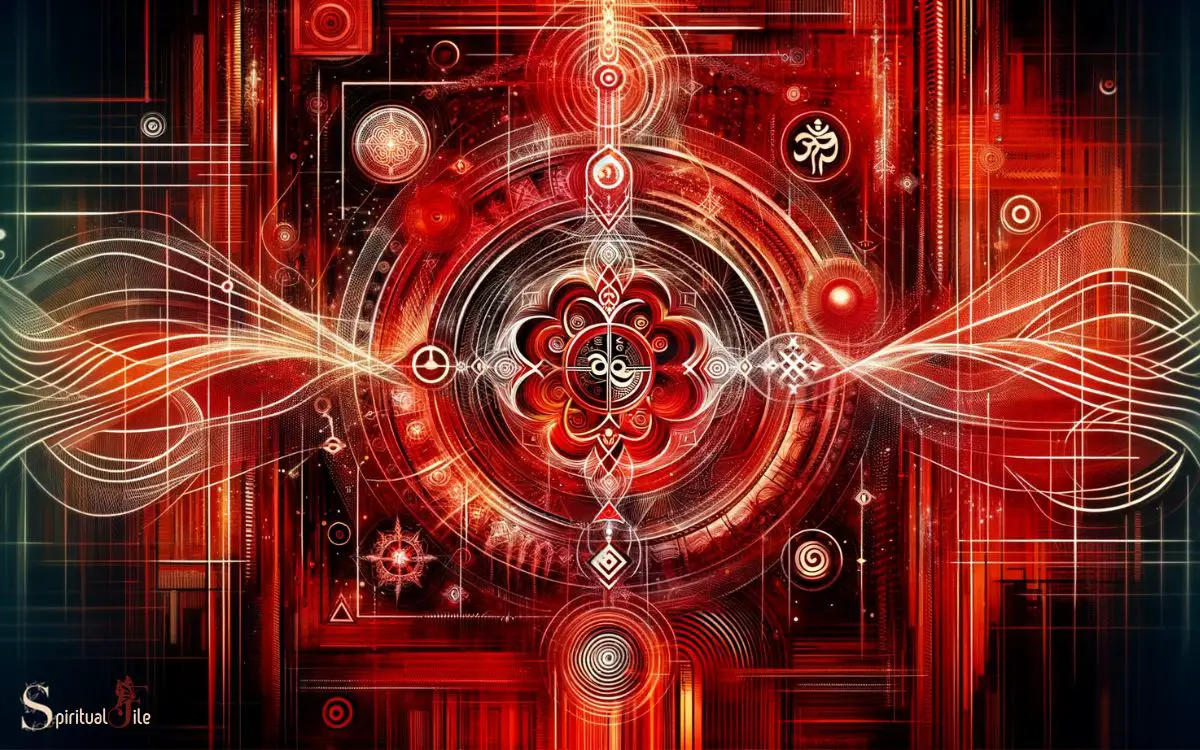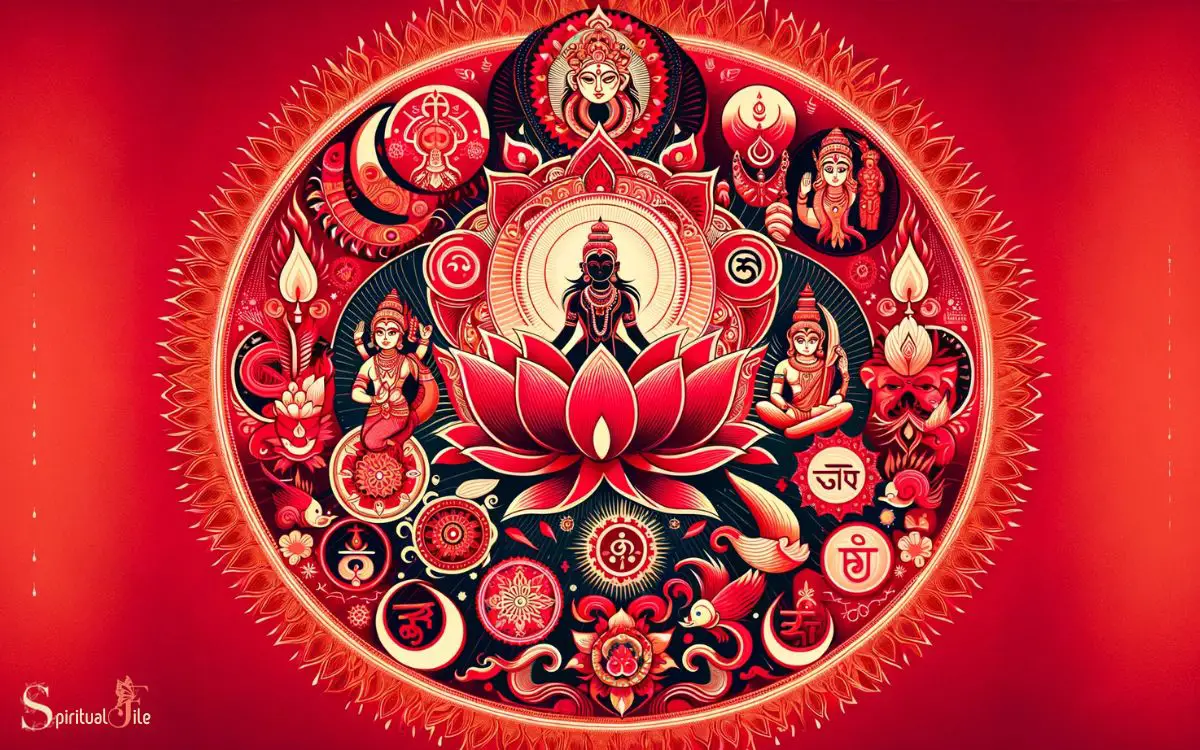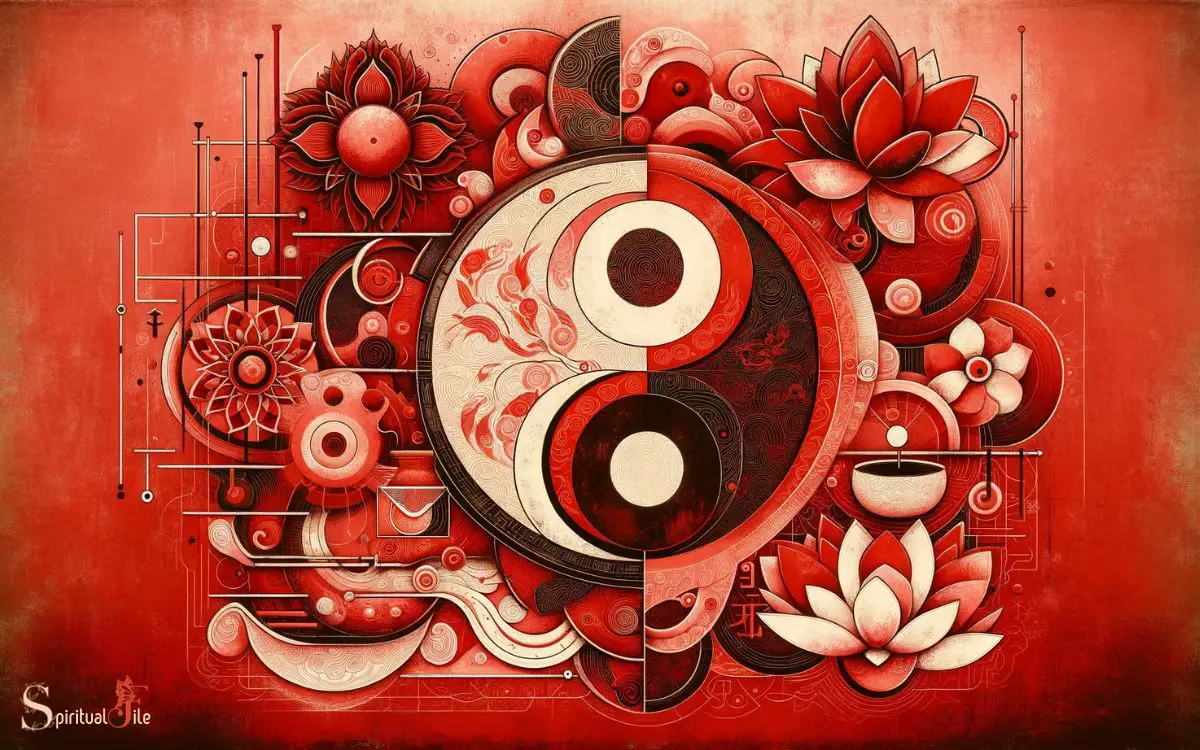What Does Red Symbolize Spiritually? Vitality!
Red is a color that resonates with spirituality and emotion, symbolizing everything from passion and love to danger and power. In spiritual contexts, red is often associated with life force, vitality, and primal energy.
It is a color that both warns and excites, holding a significant place in various religious and cultural traditions worldwide. Spiritually, red is a powerful color that can represent a range of concepts and emotions.
For example:
Red’s spiritual significance is deeply embedded in cultural rites, art, and symbolism, making it a universally influential color.
Embracing the essence of vitality, red is a spiritual beacon that transcends cultural boundaries, offering a universal language of passion and power.

Key Takeaway
Red in Eastern Spiritual Traditions

In Eastern spiritual traditions, the color red’s significance is deeply rooted in its association with vitality, passion, and transformation.
Red is often linked to the concept of life force, representing the energy that drives all living beings. It symbolizes the physical and spiritual aspects of existence, signifying the power of creation and destruction.
In many Eastern cultures, red is also connected to the idea of courage, strength, and determination, qualities that are essential on the path to spiritual growth and enlightenment.
Furthermore, red holds a prominent place in rituals and ceremonies, where it is used to invoke inner fire, passion, and the willingness to undergo personal metamorphosis.
The color red, therefore, is not just a visual sensation but a profound symbol that embodies the essence of life and spirituality in Eastern beliefs.
Symbolism of Red in Christianity

Red symbolizes various aspects of spirituality within the Christian tradition. It signifies both the divine love of God and the blood of Christ shed for humanity’s salvation.
In Christianity, the color red holds deep symbolic meaning, representing:
- The Sacrifice of Christ: Red symbolizes the blood of Jesus Christ, shed on the cross for the redemption of humanity.
- Divine Love: It signifies the immeasurable love of God for his people, as demonstrated through the sacrifice of Jesus.
- Martyrdom and Persecution: Red is associated with the martyrdom of saints and the suffering endured for the sake of faith.
- Pentecost: It represents the outpouring of the Holy Spirit on the day of Pentecost, as described in the New Testament.
- Passion and Resurrection: Red is linked to the passion, death, and resurrection of Jesus Christ, signifying hope and new life.
The Power of Red in Hinduism

The symbolism of red in Hinduism encompasses various spiritual significances, reflecting concepts such as vitality, passion, and divine energy.
Red holds great power in Hindu traditions and is often associated with the goddess Shakti, the personification of divine feminine energy.
The color red represents the creative and destructive aspects of Shakti, symbolizing her transformative and powerful nature.
In Hindu weddings, brides often wear red sarees, symbolizing fertility, prosperity, and the vitality of life.
Additionally, red is used in the sacred markings known as tilak, applied to the forehead to awaken the third eye and enhance spiritual awareness.
The color red is also associated with various deities, including Lord Shiva, who is often depicted with red elements, signifying his association with passion, power, and the transformative force of destruction and creation.
Red in Buddhism and Taoism

Symbolizing auspiciousness and enlightenment, red holds spiritual significance in both Buddhism and Taoism, reflecting concepts of vitality, transformation, and divine energy.
In Buddhism and Taoism, the color red carries profound symbolism and is used in various religious and spiritual contexts:
- The iconic image of the Red Buddha represents the Padma Buddha, symbolizing the heart, passion, and the transformative power of enlightenment.
- In Taoism, the Red Phoenix, or Zhuque, embodies the essence of fire and is associated with the southern direction, summer, and the element of transformation.
- Red is often used in traditional Chinese and Tibetan Buddhist ceremonies to symbolize good fortune, joy, and the life force.
- The red robes worn by Buddhist monks signify transformation, courage, and the commitment to the path of enlightenment.
- In both traditions, red lanterns are used to ward off evil spirits and symbolize vitality and prosperity.
How Does the Spiritual Symbolism of Pink Differ from Red?
Pink spiritual symbolism love is often associated with gentleness, compassion, and nurturing, while red is more linked to passion, vitality, and power. The color pink represents love and kindness, whereas red symbolizes strength and energy. These differences in spiritual symbolism reflect contrasting emotions and qualities in the spiritual realm.
Red’s Significance in Indigenous Spiritual Practices

Indigenous spiritual practices attribute profound significance to the color red. In many indigenous cultures, red is seen as a symbol of power, vitality, and life force. It represents the blood that gives life and the connection to the earth.
Here is a deeper understanding of red’s significance in indigenous spiritual practices:
| Symbol | Meaning |
|---|---|
| Blood | Connection to ancestors and the life force |
| Fire | Transformation, passion, and healing |
| Earth | Fertility, growth, and grounding |
| Rituals | Ceremonial use of red for protection and strength |
| Community | Symbol of unity and shared identity |
Understanding the symbolic importance of red in indigenous spiritual practices provides insight into the deep connection these cultures have with the natural world and the spiritual realm.
Conclusion
The color red holds deep spiritual significance in Eastern traditions such as Christianity, Hinduism, Buddhism, Taoism, and indigenous practices.
It represents passion, love, power, and vitality, and is often associated with auspiciousness and protection.
Across these diverse spiritual beliefs, the color red serves as a powerful symbol of energy and life force, inviting individuals to connect with the divine and embrace the vibrant, transformative qualities it embodies.






